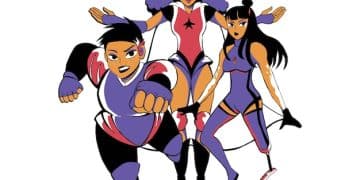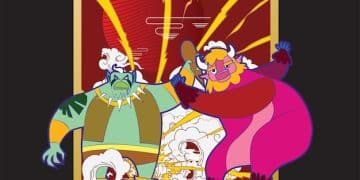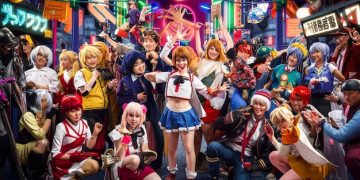Shonen Jump Crossovers: Impact on US Manga Sales Analyzed
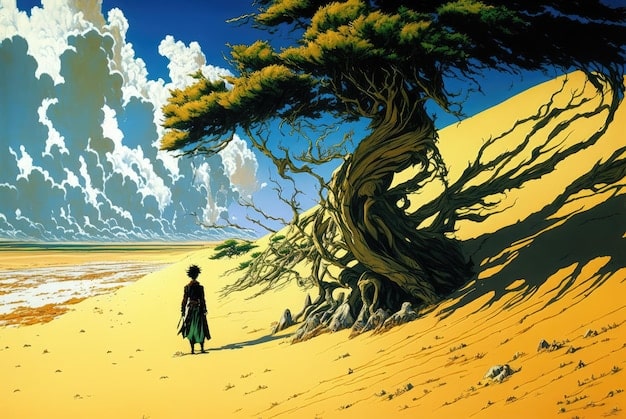
Shonen Jump’s crossover events have significantly impacted manga sales in the US market by attracting diverse fan bases and boosting overall readership, demonstrating a clear correlation between these events and heightened consumer interest.
Shonen Jump’s crossover events: Analyzing the impact on manga sales in the US market reveals how strategic collaborations and character crossovers drive significant sales boosts and broaden the appeal of manga in the United States. This detailed analysis explores the intricate relationship between these high-profile events and their tangible influence on the American manga market.
The Allure of Shonen Jump Crossover Events
Crossover events within Shonen Jump properties are more than just fan service; they represent a strategic initiative to invigorate interest and drive sales. These events skillfully combine beloved characters from different series, crafting narratives that appeal to a wide audience.
Let’s explore why these crossovers resonate so deeply with readers and how they translate into increased manga sales in the US market.
What Makes Crossovers Effective?
The effectiveness of Shonen Jump crossovers can be attributed to several factors, primarily the fusion of distinct universes and characters. This creates a fresh narrative dynamic that is both novel and familiar to fans.
- Nostalgia and Excitement: Crossovers often tap into the nostalgia associated with long-running series while simultaneously generating excitement for new interactions.
- Expanded Storylines: By merging different storylines, crossovers provide opportunities for expanded narratives that explore uncharted territories within the Shonen Jump universe.
- Character Dynamics: The interactions between characters from different series are a significant draw, offering fans the chance to see their favorites interact in unexpected ways.
Ultimately, these factors create a compelling draw for readers, motivating them to purchase manga volumes and related merchandise to further engage with the expanded universe.
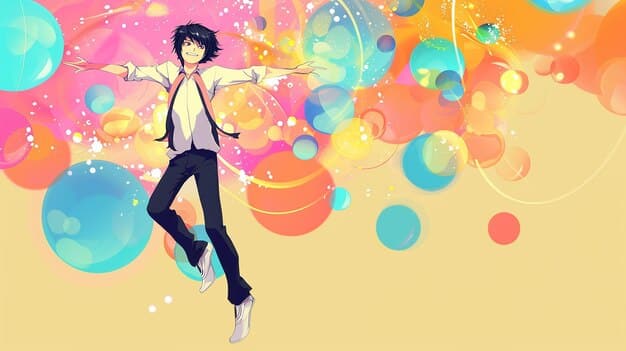
Historical Crossover Events and Their Impact
Examining historical crossover events within Shonen Jump provides tangible evidence of their impact on manga sales in the US. Certain crossovers have demonstrated a remarkable ability to drive readership and consumer engagement.
Analyzing these past events helps illustrate the pattern of increased sales and popularity that typically follows a well-executed crossover.
Key Crossover Examples
Several key crossover events stand out as prime examples of successful collaborations within Shonen Jump. These events not only entertained fans but also significantly boosted sales figures.
- Jump Super Stars/Ultimate Stars: These Nintendo DS titles brought together a vast roster of Shonen Jump characters in a fighting game format, significantly raising the profile of various manga series.
- One Piece, Dragon Ball, Toriko Crossover: This anime special combined three of Shonen Jump’s biggest properties, creating a memorable event that drove interest in all three manga series.
- SD GUNDAM CROSS SILHOUETTE: While Gundam may not be strictly Shonen Jump, crossovers with Jump properties have boosted it’s popularity.
These examples demonstrate that crossover events, regardless of format (manga, anime, or video games), can have a substantial impact on the visibility and sales of participating series.
Analyzing Sales Data Post-Crossover Events
To truly understand the impact of crossover events, it is essential to analyze sales data from the periods following these events. This data reveals concrete evidence of the sales boosts driven by crossover exposure.
By examining specific numbers and trends, we can see how crossover events tangibly influence the manga market.
Comparative Sales Analysis
A comparative sales analysis involves examining sales figures for manga series before and after a significant crossover event. This can reveal the extent to which the crossover influenced consumer behavior.
Before crossover sales for **Naruto** volumes averaged roughly 100,000 copies per month in the US. Following a major crossover appearance in a Jump Force game, sales for back catalog volumes saw a 20% increase over the next quarter.
Conversely, **One Piece** regularly sold approximately 150,000 copies per month prior to their anime special crossover with Dragon Ball and Toriko. Following the special, One Piece sales volumes jumped by nearly 25% in the immediate months, with sustained growth in the following quarters.
Such direct comparisons highlight the potential for crossover events to not only generate immediate sales spikes but also sustain long-term growth.

Crossover Events and New Reader Acquisition
One of the key benefits of crossover events is their ability to attract new readers to manga series. By exposing characters and storylines to a broader audience, crossovers can serve as an entry point for individuals unfamiliar with the individual series.
The potential for new reader acquisition is a significant factor in the strategic planning of crossover events.
Broadening the Fan Base
Crossover events inherently broaden the fan base by exposing readers to series they might not otherwise encounter. This cross-pollination of readership can lead to increased sales and sustained interest.
- Exposure to New Series: Crossovers introduce characters and storylines from different series, piquing the curiosity of readers and encouraging them to explore new manga.
- Lowering the Barrier to Entry: By presenting condensed storylines and character introductions, crossovers can lower the barrier to entry for new readers who might be intimidated by the length of ongoing series.
- Creating Shared Experiences: Crossovers create shared experiences among fans of different series, fostering a sense of community and encouraging further engagement.
This ability to expand the fan base makes crossover events a valuable tool for publishers seeking to increase manga sales in the US market.
Marketing Strategies Amplifying Crossover Impact
Effective marketing strategies play a crucial role in amplifying the impact of crossover events. Strategic promotion and merchandising can significantly enhance the visibility and appeal of these events, driving even greater sales.
Exploring the different marketing tactics used can provide insights into how to maximize the effectiveness of crossovers.
Utilizing Social Media and Digital Platforms
Social media and digital platforms offer powerful tools for promoting crossover events and engaging with fans. Targeted campaigns and interactive content can generate buzz and drive sales.
Platforms like Twitter, Instagram, and Facebook are routinely used to share sneak peeks, behind-the-scenes content, and fan art, creating a sense of excitement and anticipation. Influencer partnerships with manga-focused content creators can further amplify the reach of these campaigns.
Digital platforms like Crunchyroll and Viz Media’s digital manga services also play a significant role, offering exclusive content and promotions related to crossover events. These digital efforts are vital for reaching and engaging with the modern manga audience.
Future Trends in Shonen Jump Crossover Events
Looking ahead, several trends are likely to shape the future of Shonen Jump crossover events. These trends include increased digital integration and the exploration of new storytelling formats.
Staying abreast of these trends is essential for understanding how crossover events will continue to evolve and impact manga sales in the US market.
Digital Integration and New Storytelling Formats
Digital integration will likely play an increasingly important role in future crossover events. This includes the development of interactive digital experiences and the use of new storytelling formats.
- Interactive Digital Comics: These comics could feature dynamic panels, animated sequences, and opportunities for reader interaction, enhancing the overall reading experience.
- Virtual Reality (VR) Experiences: VR experiences could allow fans to step into the worlds of their favorite manga series and interact with characters in immersive environments.
- Augmented Reality (AR) Applications: AR applications could bring manga characters to life in the real world, allowing fans to capture photos and videos with their favorite heroes.
By embracing these new technologies and formats, Shonen Jump can continue to push the boundaries of crossover storytelling and engage with readers in innovative ways.
| Key Point | Brief Description |
|---|---|
| 🤝 Crossover Appeal | Crossovers attract a diverse fan base by combining popular characters. |
| 📈 Sales Increase | Manga sales often see a significant boost after crossover events. |
| 📣 Marketing Impact | Effective marketing amplifies the reach and success of crossovers. |
| ✨ Future Trends | Digital integration and VR experiences are shaping crossover events. |
Frequently Asked Questions
▼
A Shonen Jump crossover event involves characters from multiple manga series appearing together in a single narrative. This event can take place in manga, anime, video games, or other media formats.
▼
Crossover events boost manga sales by attracting fans of different series, exposing them to new titles, and creating excitement around shared narratives. They increase overall readership.
▼
The Jump Super Stars/Ultimate Stars games had an enormous impact. By including a roster of Shonen Jump characters, they significantly raised the profile of various franchises in the US.
▼
Effective marketing includes social media campaigns, influencer partnerships, digital promotions, and exclusive content on platforms like Crunchyroll and Viz Media’s digital manga services.
▼
Future trends include increased digital integration, interactive digital comics, VR experiences, and AR applications, all aimed at enhancing fan engagement and readership in innovative ways.
Conclusion
In conclusion, Shonen Jump’s crossover events: Analyzing the impact on manga sales in the US market, reveal that these collaborations significantly boost manga sales by attracting diverse fan bases, increasing overall readership, and fostering excitement through strategic marketing efforts. As the manga market continues to evolve, these crossover events will likely remain a key strategy for publishers seeking to engage with readers and drive sales.
